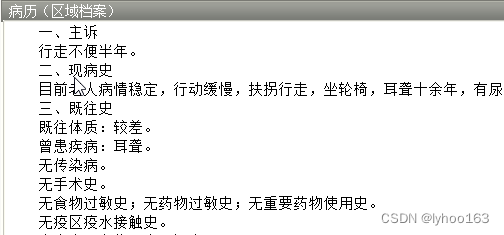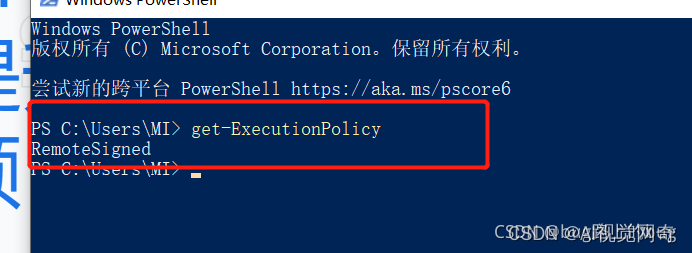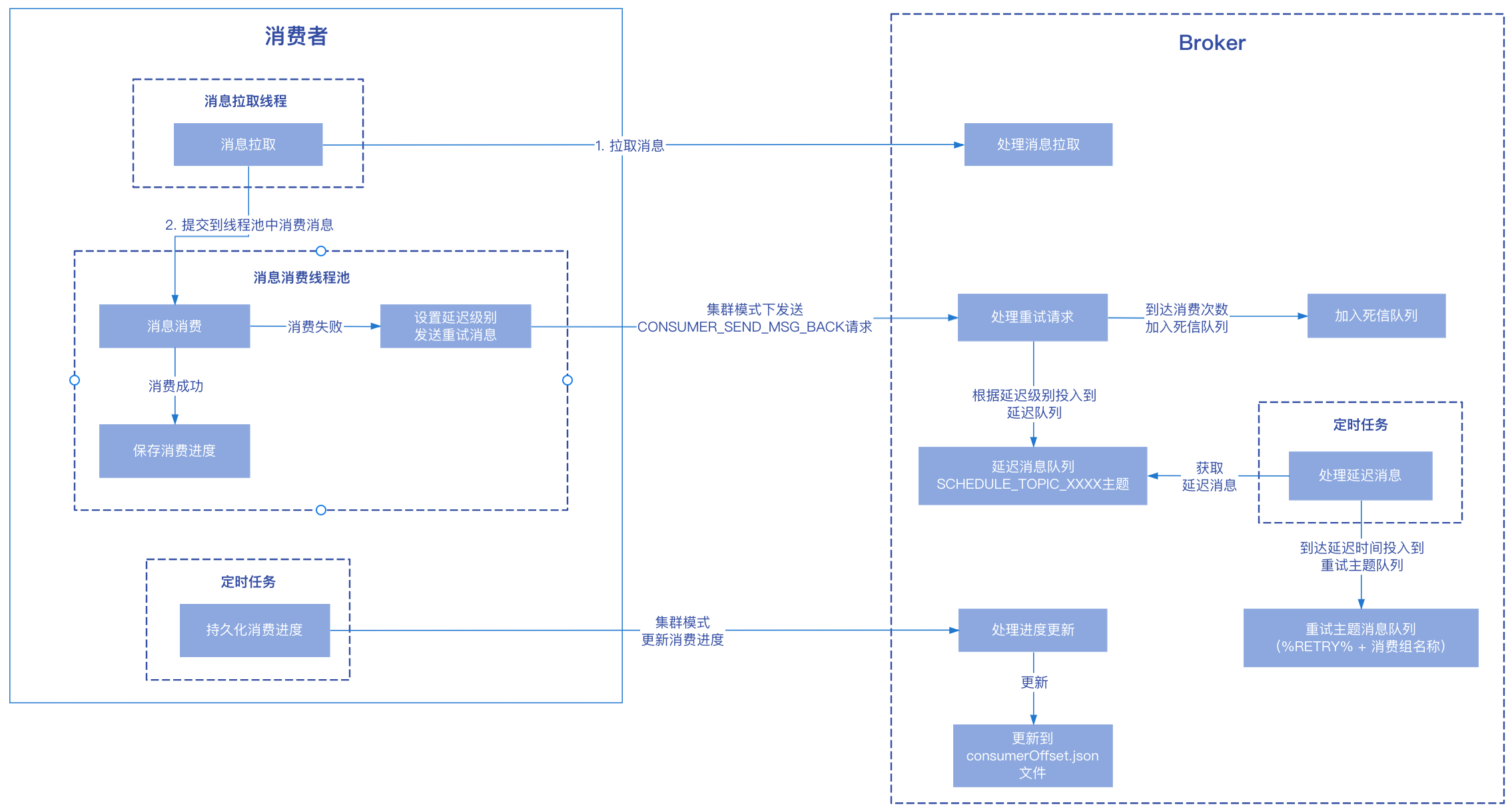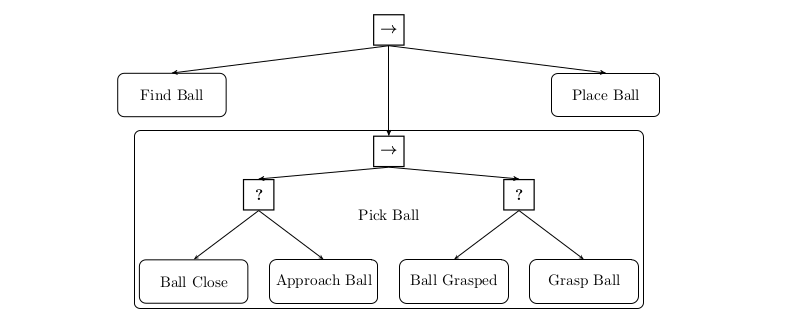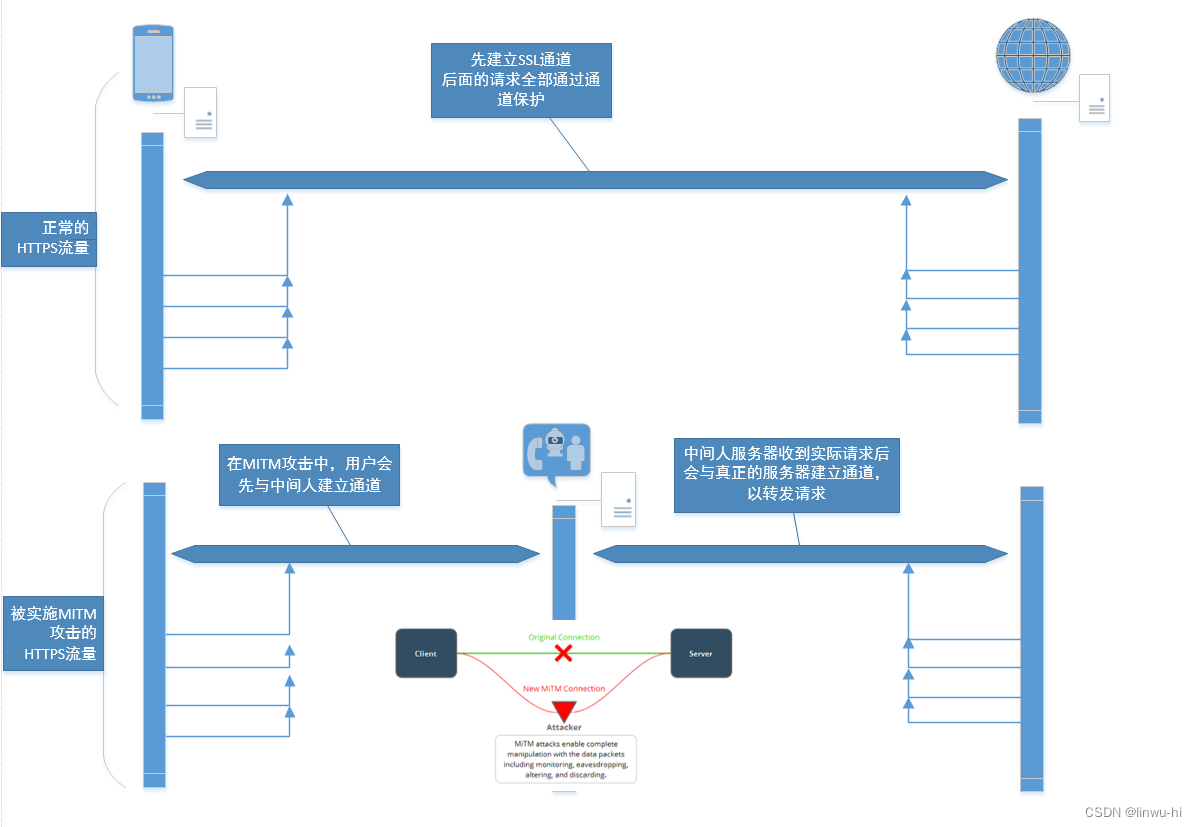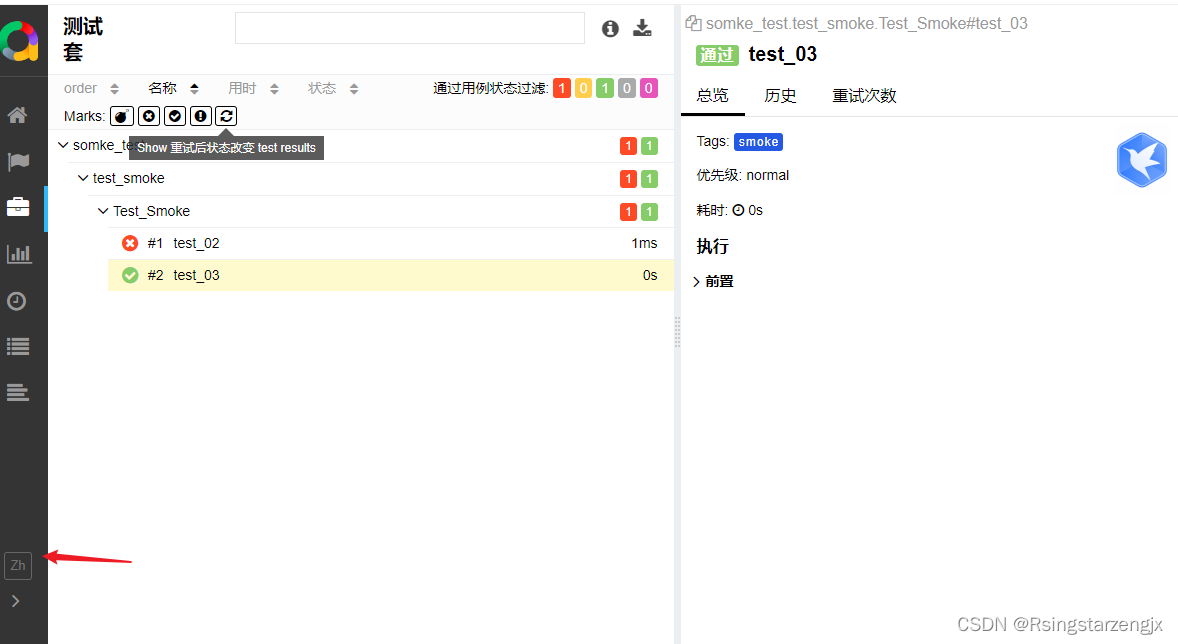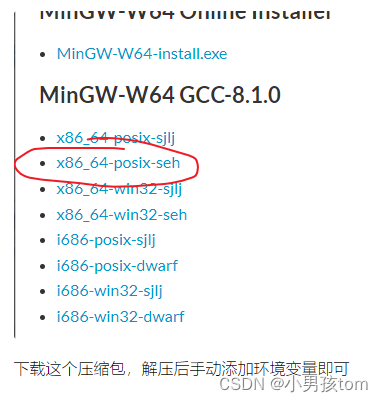随机链表的复制
- 题解1 哈希表
- 题解2 回溯+哈希
- 哈希思路精简
- 题解3 优化迭代
给你一个长度为
n 的链表,每个节点包含一个额外增加的随机指针
random ,该指针可以指向链表中的任何节点或空节点。
构造这个链表的 深拷贝。 深拷贝应该正好由 n 个 全新 节点组成,其中每个新节点的值都设为其对应的原节点的值。新节点的 next 指针和 random 指针也都应指向复制链表中的新节点,并使原链表和复制链表中的这些指针能够表示相同的链表状态。复制链表中的指针都不应指向原链表中的节点 。
例如,如果原链表中有 X 和 Y 两个节点,其中 X.random --> Y 。那么在复制链表中对应的两个节点 x 和 y ,同样有 x.random --> y 。
返回复制链表的头节点。
用一个由 n 个节点组成的链表来表示输入/输出中的链表。每个节点用一个 [val, random_index] 表示:
val:一个表示 Node.val 的整数。
random_index:随机指针指向的节点索引(范围从 0 到 n-1);如果不指向任何节点,则为 null 。
你的代码 只 接受原链表的头节点 head 作为传入参数。
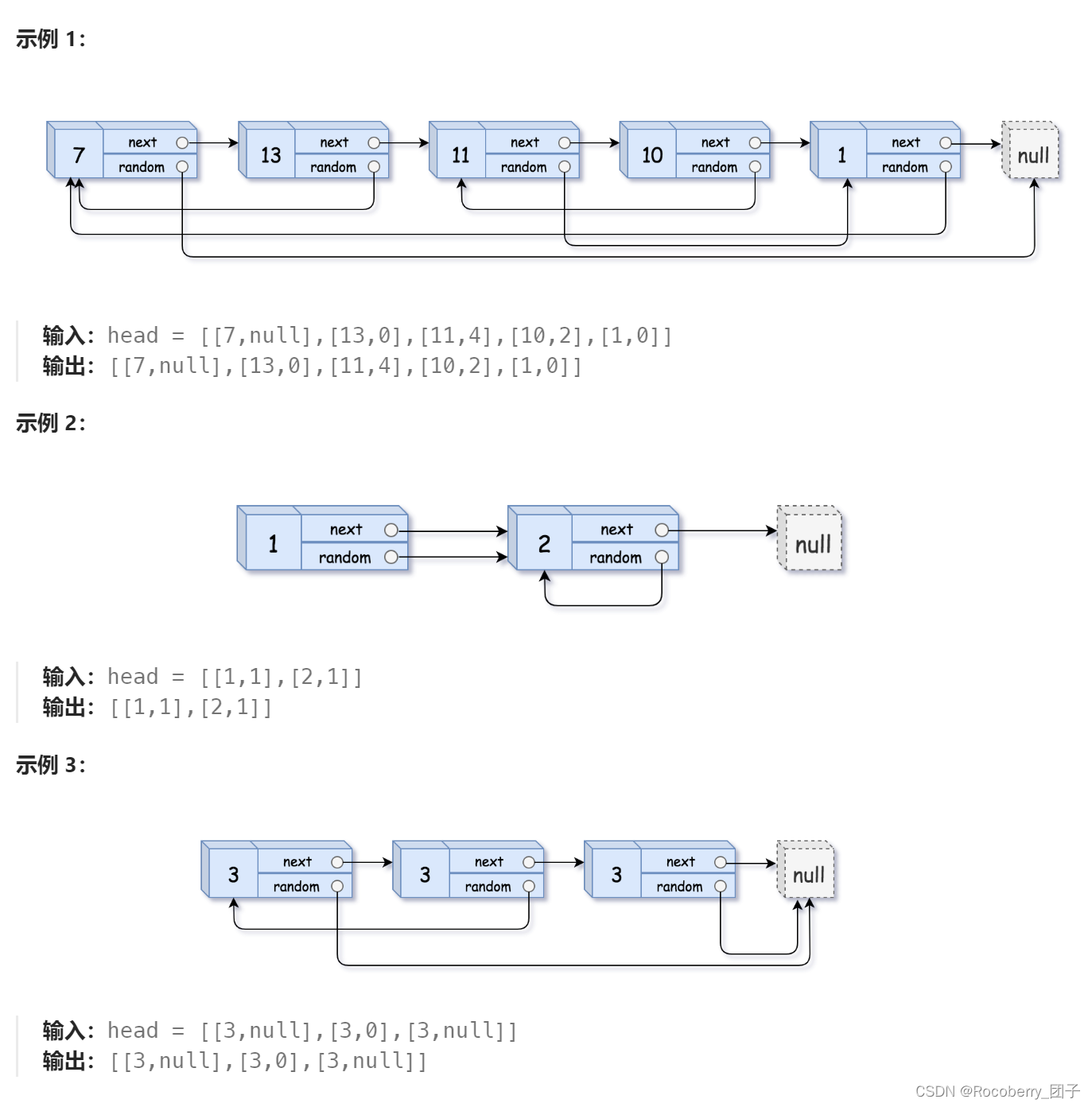
提示:
- 0 <=
n<= 1000 -
−
1
0
4
-10^4
−104 <=
Node.val<= 1 0 4 10^4 104
Node.random为null或指向链表中的节点。
注意:本题与主站 138 题相同:138
题解1 哈希表
/*
// Definition for a Node.
class Node {
public:
int val;
Node* next;
Node* random;
Node(int _val) {
val = _val;
next = NULL;
random = NULL;
}
};
*/
class Solution {
public:
Node* copyRandomList(Node* head) {
if(! head) return nullptr;
Node *p, *q, *f, *cphead;
f = p = q = new Node(head->val);
cphead = head;
/** 受判题启发:给结点编号(array-like)
1. 变量需要3个map,分别记录结点-编号,编号-地址/结点,结点编号-其随机结点编号
2. 关键问题是:随机结点是在整个链表的基础上去看,即next建立了一条完整的链表,之后才有random的关系,即random结点是已经存在的结点,不能再new了
**/
unordered_map<Node*, int> idxmap;
unordered_map<int, Node*> addrmap;
unordered_map<int, int> randomidxmap;
/** 对空特殊处理(可以让idx从1开始,避开0)
int idx = 0;
idxmap[nullptr] = 1001;
randomidxmap[idxmap[nullptr]] = idxmap[nullptr];
addrmap[randomidxmap[idxmap[nullptr]]] = nullptr;
**/
int idx = 1;
// 结点编号,建立新链表
while(head){
idxmap[head] = idx;
idxmap[q] = idx;
addrmap[idx] = q;
head = head->next;
if(head)
q->next = new Node(head->val);
else q->next = nullptr;
q = q->next;
idx ++;
}
// 记录原链表的random关系
while(cphead){
randomidxmap[idxmap[cphead]] = idxmap[cphead->random];
cphead = cphead->next;
}
// 复刻
while(p){
p->random = addrmap[randomidxmap[idxmap[p]]];
p = p->next;
}
return f;
}
};

题解2 回溯+哈希
class Solution {
public:
// key = 原结点
// value = 新结点
unordered_map<Node*, Node*> Nodemap;
Node* copyRandomList(Node* head) {
if(! head) return nullptr;
// 需要克服的问题是:不知道random指向的结点是否建立过
// 如果没建立过,则新建
if(! Nodemap.count(head)){
Node* newnode = new Node(head->val);
Nodemap[head] = newnode;
newnode->next = copyRandomList(head->next);
newnode->random = copyRandomList(head->random);
}
// 建立过直接返回
return Nodemap[head];
}
};

哈希思路精简
class Solution {
public:
Node* copyRandomList(Node* head) {
if(! head) return nullptr;
map<Node*, Node*> kkmap;
Node* autohead = head;
// 新建链表
// kkmap保证每个结点对应的都是新地址
while(autohead){
kkmap[autohead] = new Node(autohead->val);
autohead = autohead->next;
}
autohead = head;
// 建立next和random关系
while(autohead){
kkmap[autohead]->next = kkmap[autohead->next];
kkmap[autohead]->random = kkmap[autohead->random];
autohead = autohead->next;
}
return kkmap[head];
}
};

题解3 优化迭代
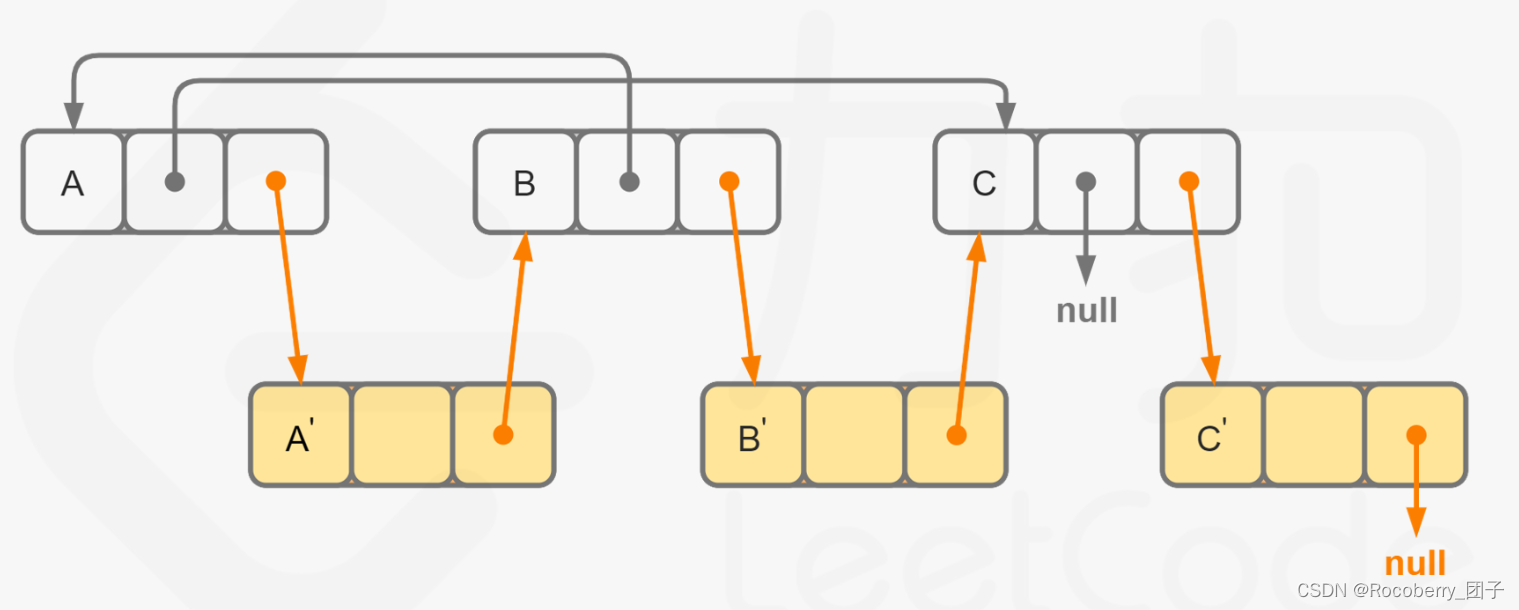
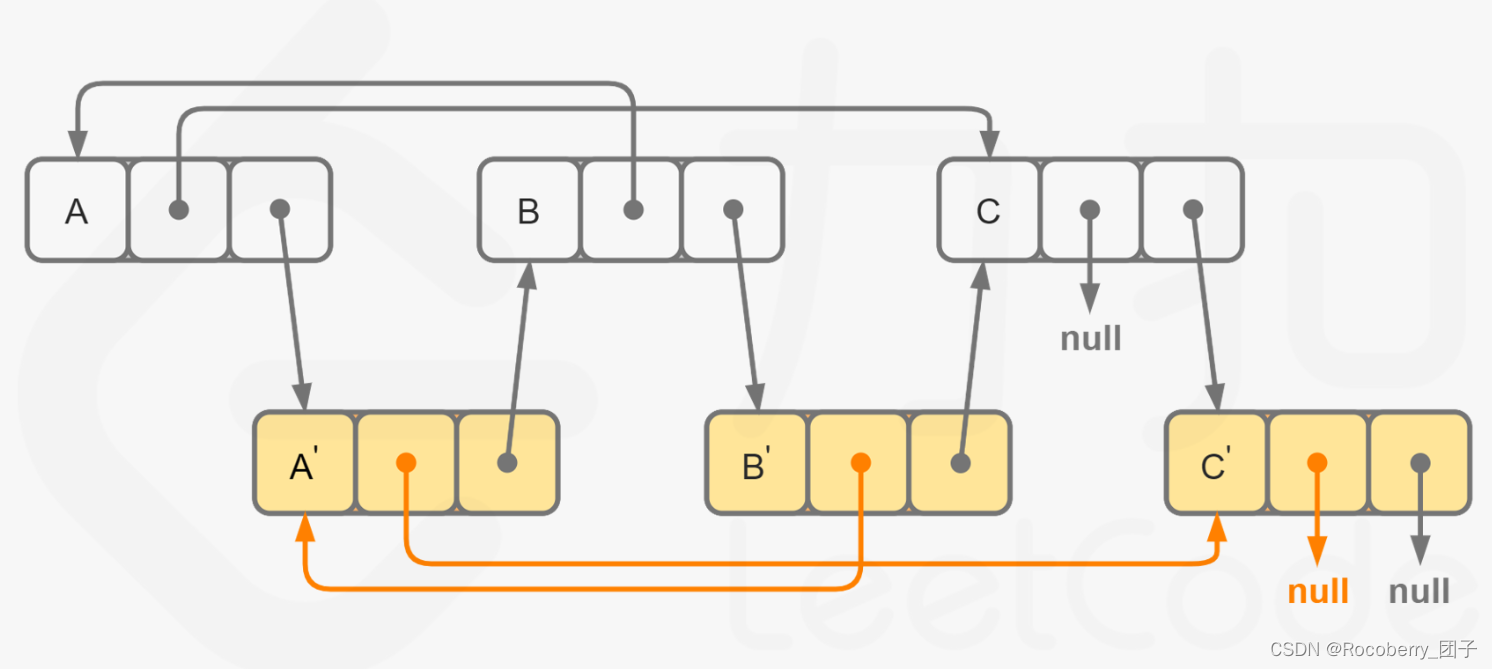
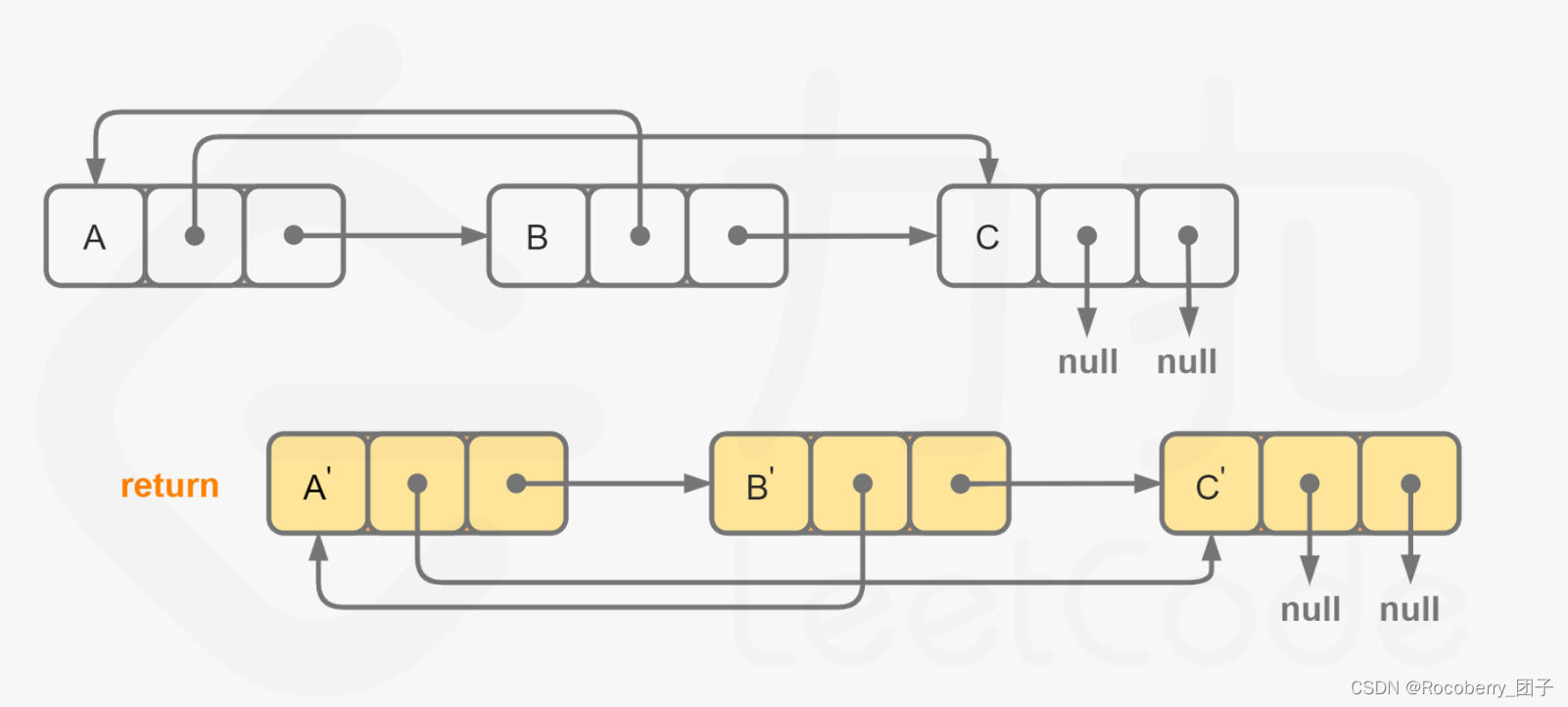
class Solution {
public:
Node* copyRandomList(Node* head) {
if(! head) return nullptr;
Node* ll = head;
Node* newhead;
// copy to the original link
while(ll){
Node* nextll = ll->next;
Node* tmp = new Node(ll->val);
ll->next = tmp;
tmp->next = nextll;
ll = nextll;
}
// Handle random point First !!!!(next info exists)
ll = head;
while(ll){
Node* cphead = ll->next;
cphead->random = ll->random ? ll->random->next : nullptr;
ll = cphead->next;
}
newhead = head->next;
ll = head;
// Handle next point and restore the original one
while(ll){
Node* cphead = ll->next;
// 断开连接
ll->next = cphead->next;
cphead->next = cphead->next ? cphead->next->next : nullptr;
ll = ll->next;
}
return newhead;
}
};

